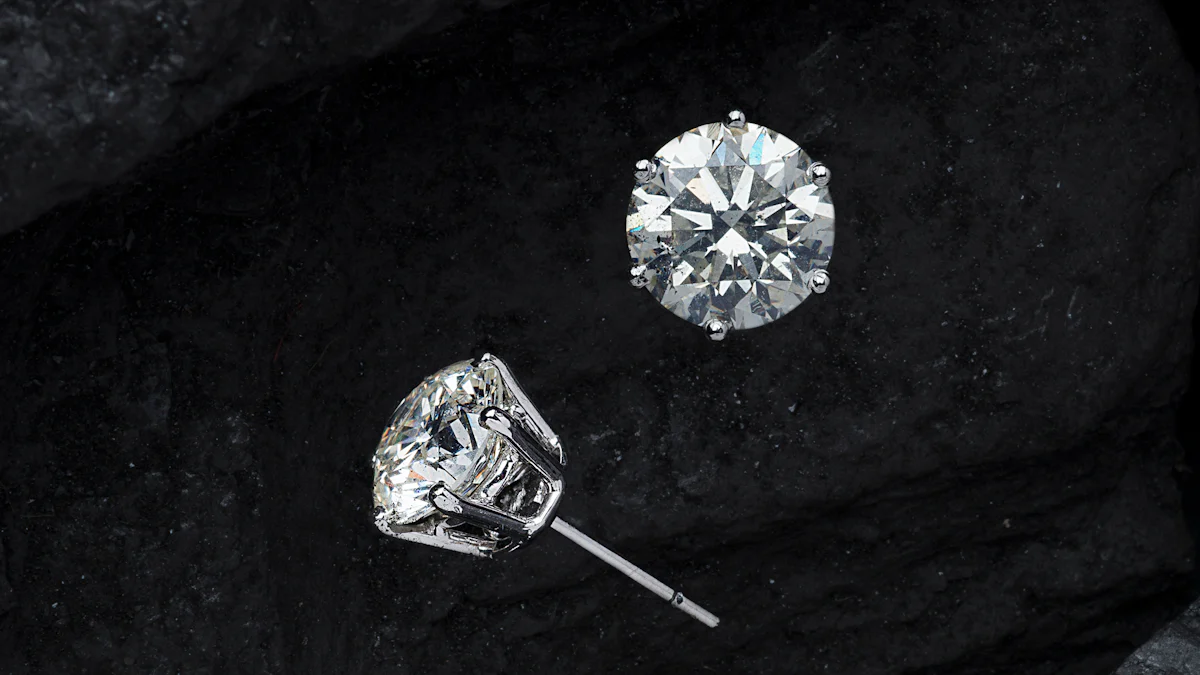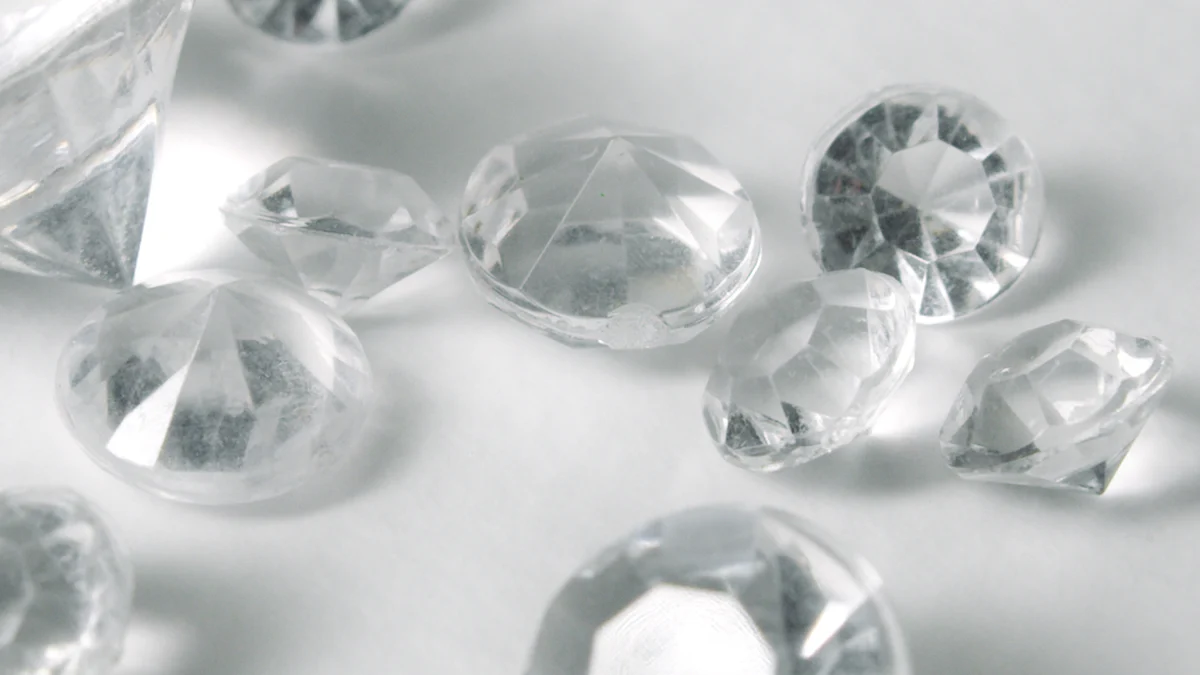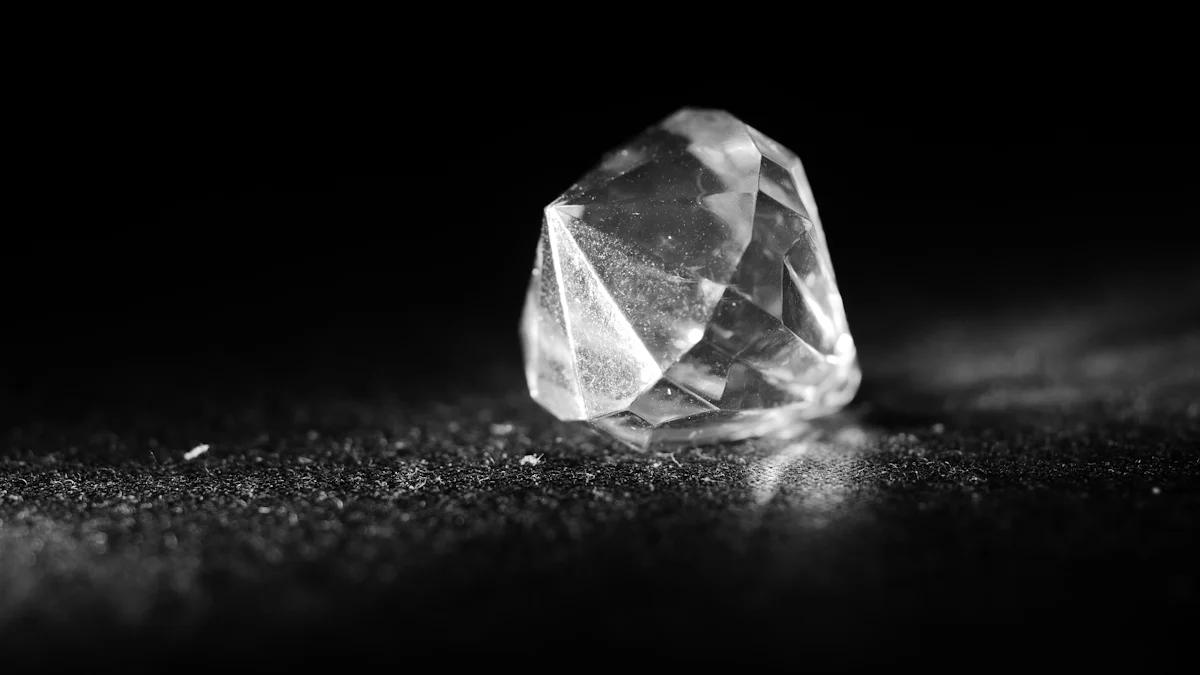Imperfect I Meaning in Diamond Clarity Explained

Understanding the "Imperfect I" meaning in diamond clarity is crucial for any potential buyer. On the GIA clarity scale, "Imperfect I" represents diamonds with noticeable inclusions that may affect transparency and durability. This grade sits at the lower end of the diamond clarity chart, indicating visible imperfections even to the naked eye. Despite these flaws, many commercial jewelry pieces feature such diamonds due to their unique beauty marks. Recognizing these clarity characteristics helps you make informed decisions, balancing quality with budget considerations.
Understanding 'Imperfect I' in Diamond Clarity
The GIA Clarity Scale
Overview of the GIA scale
The Gemological Institute of America (GIA) developed a comprehensive diamond clarity grading scale to help you understand the quality of a diamond. This scale ranges from Flawless (FL) to Included (I), with each grade reflecting the visibility of imperfections under 10x magnification. The clarity grades determined by the GIA consider the number, size, nature, and location of inclusions and blemishes within the diamond. This scale serves as a guide for evaluating diamond clarity, ensuring you make informed decisions when purchasing.
Where 'Imperfect I' fits on the scale
The "Imperfect I" category sits at the lower end of the diamond clarity chart. Diamonds in this category have inclusions that are obvious under 10x magnification and often visible to the naked eye. These inclusions can affect the diamond's transparency and brilliance, making them less desirable compared to higher clarity grades. However, understanding the imperfect i meaning diamond helps you balance quality with budget considerations, especially if you're looking for unique beauty marks in your jewelry.
Characteristics of 'Imperfect I' Diamonds
Common inclusions found in 'Imperfect I' diamonds
In "Imperfect I" diamonds, you will find various types of inclusions. These may include crystals, clouds, or feathers, which are internal flaws, and blemishes like scratches or nicks on the surface. These inclusions are more pronounced in this clarity grade, affecting the diamond's overall appearance. Recognizing these characteristics is crucial when evaluating diamond clarity, as they can impact both the aesthetic and structural integrity of the stone.
Visibility of inclusions to the naked eye
Inclusions in "Imperfect I" diamonds are typically visible without magnification, making them challenging for those seeking an eye-clean diamond. While some diamonds in this category might appear cleaner, they often have diminished transparency. This visibility factor is essential when considering the imperfect i meaning diamond, as it directly influences the diamond's sparkle and appeal. When shopping, keep in mind that heavily included diamonds may have a compromised structure, increasing the risk of chipping or breaking.
Impact of 'Imperfect I' on Diamond Appearance and Value

Visual Impact
How inclusions affect the diamond's sparkle
Inclusions in "Imperfect I" diamonds can significantly impact their sparkle. These types of inclusions scatter light, reducing the diamond's brilliance and fire. When light enters a diamond, it should reflect and refract to create a dazzling sparkle. However, inclusions disrupt this process, causing light to scatter in different directions. As a result, the diamond may appear duller compared to those with fewer inclusions. Understanding the imperfect i meaning diamond helps you appreciate how these imperfections influence the overall appearance.
Comparing 'Imperfect I' with higher clarity grades
When you compare "Imperfect I" diamonds with those of higher clarity grades, the differences become apparent. Diamonds with higher clarity, such as VS (Very Slightly Included) or VVS (Very Very Slightly Included), have fewer visible inclusions. These diamonds often appear more brilliant and are closer to being an eye-clean diamond. In contrast, "Imperfect I" diamonds have inclusions visible to the naked eye, affecting their transparency and brilliance. The diamond clarity chart helps you visualize where "Imperfect I" stands in relation to other grades, guiding you in making informed choices.
Value Considerations
Price differences between clarity grades
The clarity grading of a diamond plays a crucial role in its pricing. Diamonds with higher clarity, such as Flawless or Internally Flawless, command premium prices due to their rarity and lack of visible inclusions. On the other hand, "Imperfect I" diamonds are more affordable, making them an attractive option for budget-conscious buyers. The diamond clarity chart illustrates how clarity impacts value, with "Imperfect I" offering a balance between cost and appearance. By understanding the imperfect i meaning diamond, you can make cost-effective decisions without compromising on style.
Balancing clarity with other diamond qualities
When purchasing a diamond, consider balancing clarity with other qualities like cut, color, and carat weight. While clarity is important, it is not the sole determinant of a diamond's beauty. A well-cut "Imperfect I" diamond can still exhibit impressive sparkle and appeal. By focusing on the overall quality, you can find eye clean diamonds that meet your preferences and budget. Use buying tips for diamond clarity to evaluate each aspect, ensuring you select a diamond that aligns with your desires and financial considerations.
Evaluating 'Imperfect I' Diamonds for Purchase

Tips for Inspecting 'Imperfect I' Diamonds
When you decide to purchase an "Imperfect I" diamond, knowing what to look for can make a significant difference. Here are some essential tips:
What to look for in inclusions
Inclusions play a crucial role in determining a diamond's clarity grade. You should examine the size, number, and position of these imperfections. VRAI, an expert in diamonds and clarity grading, emphasizes that the noticeable contrast between the imperfections and the diamond itself impacts its durability. Look for inclusions that do not compromise the diamond's structural integrity. Crystals, clouds, and feathers are common types of inclusions in "Imperfect I" diamonds. Ensure these do not affect the diamond's overall appearance or risk chipping.
Importance of professional grading reports
A professional grading report is indispensable when evaluating a diamond. This document provides an unbiased assessment of the diamond's clarity and other qualities. The Gem Society advises that for an "Imperfect I" diamond, understanding its durability and whether it appears eye-clean is essential. A grading report from a reputable organization like the GIA ensures you have accurate information about the diamond's clarity grade. This knowledge helps you make informed decisions and avoid potential pitfalls.
Making Informed Purchasing Decisions
Choosing the right diamond involves balancing various factors. Here’s how you can make a well-informed decision:
Weighing clarity against budget and preferences
When purchasing a diamond, consider how clarity fits into your budget and personal preferences. While higher clarity grades often mean higher prices, "Imperfect I" diamonds offer a more affordable option. You might find that these diamonds, despite their inclusions, meet your aesthetic desires. Evaluate how much importance you place on having an eye-clean diamond versus other qualities like cut and carat weight. This balance helps you find a diamond that aligns with your financial and stylistic goals.
Consulting with a trusted jeweler
A trusted jeweler can provide invaluable guidance during your purchase. They can help you understand the diamond grading system and how different clarity grades affect value and appearance. A jeweler's expertise ensures you select a diamond that meets your expectations. They can also assist in identifying eye clean diamonds within the "Imperfect I" category, ensuring you get the best clarity grade possible for your budget. Building a relationship with a knowledgeable jeweler can enhance your buying experience and confidence.
Understanding the "Imperfect I" clarity grade helps you make informed decisions when purchasing diamonds. These diamonds often have visible inclusions, which can affect their sparkle and durability. However, they offer a cost-effective option for those prioritizing budget over perfection. When considering "Imperfect I" diamonds, focus on balancing clarity with other qualities like cut and carat weight. Consult with a trusted jeweler to ensure you select the best clarity grade for your needs. Ultimately, prioritize your personal preferences and budget to find a diamond that truly resonates with you.
FAQ
What are the characteristics of I Clarity diamonds?
I Clarity diamonds fall under the "Imperfect" category. They have inclusions that are obvious under 10x magnification. These inclusions can affect the diamond's transparency and brilliance. It's important to note that diamonds graded as I1-I3 are often not recommended or sold due to their noticeable imperfections.
Can an I clarity diamond look good in an engagement ring?
Most I clarity diamonds will have visible imperfections. Some buyers might accept minor flaws for cost savings, but many prefer diamonds that appear flawless. When considering an I clarity diamond for an engagement ring, you should ask about its durability and whether it appears eye-clean.
When is an I color diamond a good choice?
I color diamonds may show a slight yellow tint. However, this tint is usually not noticeable when set in an engagement ring. These diamonds offer great value, making them an excellent choice for many buyers seeking a balance between quality and cost.
What terms are used in diamond clarity grading?
Diamond clarity grading uses terms like very very slightly imperfect, very slightly imperfect, slightly imperfect, and included. The Gemological Institute of America (GIA) has replaced the term 'imperfect' with 'included' in recent years, reflecting a more standardized approach to clarity grading.
How do inclusions affect a diamond's appearance?
Inclusions scatter light within the diamond, reducing its brilliance and fire. This scattering can make the diamond appear duller compared to those with fewer inclusions. Understanding how inclusions impact appearance helps you appreciate the overall effect on the diamond's sparkle.
Are I Clarity diamonds a good investment?
I Clarity diamonds are more affordable due to their visible inclusions. They can be a good investment if you prioritize budget over perfection. However, you should weigh clarity against other factors like cut and carat weight to ensure you get the best value for your money.
How can I ensure I'm buying a quality I Clarity diamond?
To ensure quality, examine the size, number, and position of inclusions. Look for a professional grading report from a reputable organization like the GIA. This report provides an unbiased assessment of the diamond's clarity and other qualities, helping you make an informed decision.
What should I consider when choosing a diamond for an engagement ring?
When selecting a diamond, consider clarity, cut, color, and carat weight. While clarity is important, it shouldn't be the only factor. A well-cut diamond can still exhibit impressive sparkle, even if it has some inclusions. Balance these qualities to find a diamond that meets your preferences and budget.
See Also
Key Characteristics of an Impeccable Diamond Ring
Exploring Various Diamond Cuts for Engagement Rings
The Fascination Behind Diamond Dust Rings Explained

